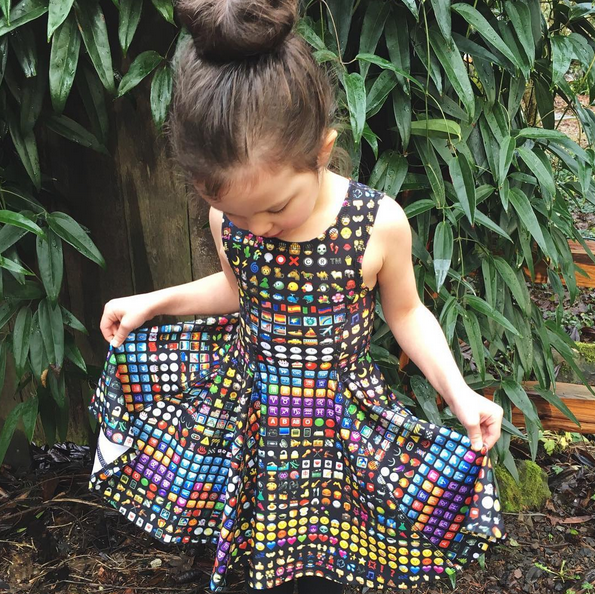
The heart wants what the heart wants, and my daughter’s heart is a Lisa Frank landscape made up of sparkles and rainbows and princesses and unicorns. Image: Lauren Hartmann.
My 4-year-old daughter is the “girliest” of girls; from lip gloss to sparkles to all things pink and purple, she can’t get enough.
The irony in this is that from the time she was a baby I have tried my hardest to surround her with all things neutral. I dressed her in shades of grey and black and white and tan and ventured back and forth between both the girls and the boys clothing sections when shopping for her. For her first birthday, she received a teepee and a wooden tool set.
But the heart wants what the heart wants, and my daughter’s heart is a Lisa Frank landscape made up of sparkles and rainbows and princesses and unicorns. It’s just who she is, and I am OK with that.
But what I am not completely fine with is her labeling these preferences as being “for girls” or “for boys.” She always insists that her little brother “won’t like” this, that, or the other thing that she’s playing with because “it’s for girls.” Other times, she’ll feign incompetence at an activity like building with blocks because “that’s for boys.”
It is very important to me that she grows up knowing that boys and girls are equally welcome to all their interests. Certainly, boys and girls are different and many will have leanings towards certain activities/clothing/toys, but that doesn’t mean that it’s one-size-fits-all. I am trying to teach her that there is a world of preferences available for us and we all like what we like. She likes dolls and dress-up, and that’s great. It would also be great if she liked trucks and building with blocks. The same goes for her brother.
This can be a difficult concept to instill in such a little person, but I really hope to encourage her to embrace the differences in the world around us and within herself. Here are a few ways I am doing this.
1. I keep correcting her language.
While I don’t want to beat a dead horse so to speak, I do keep correcting my daughter when she makes gender generalizations. When I hear her say that something is “just for boys” or “just for girls,” I very gently remind her that everything is for everyone. It’s just about what each person prefers and enjoys.
2. I offer her the choice of a variety of activities.
Despite the fact that my daughter has a natural leaning toward dolls and dramatic play activities, I will continue to encourage her to try new things. I will keep offering her blocks and play dough and trucks and dinosaurs and books and anything else that I think might spark her imagination. I will invite her to have dance parties in the kitchen and jump in mud puddles. I will encourage her in her love for ballet, but also offer her opportunities to try soccer or an art class. No activity will be off-limits simply because she is a girl, and I hope that she will see that as an encouragement to explore her interests and not be put in a box.
3. I keep showing her positive role models.
I will continue to show my daughter strong female and male role models who break gender stereotypes. I will show her videos of talented young male ballet dancers and we will read books about great women scientists and engineers. I want her to see that our gifts and talents can take us in so many directions that are not simply dictated by our gender.
4. I keep talking about it.
When I see examples of stereotypes being used in books or on TV or even just at the playground, I will use these as opportunities to talk. I will ask my daughter what she thinks of the situation and use it as a catalyst for a discussion surrounding these stereotypes and how we can break them down.
5. I keep leading by example.
My daughter is watching my every move, so it’s up to me to show her what a strong woman looks like. I will embrace my strengths and my interests and encourage her to do the same!






![Photo By Dr. François S. Clemmons [CC BY-SA 4.0 (https://creativecommons.org/licenses/by-sa/4.0)], from Wikimedia Commons](/sites/default/files/styles/profile/public/images/article/2019-06/Mr.%2520Rogers%2520%25281%2529.png?itok=LLdrwTAP)
